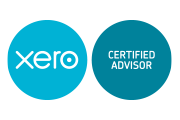Read the latest Blogs below or use the search function on the right hand side to find a specific blog.
Data Matching Programs
The Government has announced that it will request and collect information for the purposes of the following data matching programs.
Tax help for people affected by bushfires
The ATO has assured people directly affected by bushfires that their refunds will be fast tracked and that they will have additional time to lodge income tax returns and activity statements.
Car expense rates per km 2013/14
The car expense rates per kilometre have been set for the 2013/14 year (and they have been increased for the first time since 2008/09).
Crystal ball gazing - what 2014 will mean to you
The strange thing about life is that we live as if life is consistent. The reality is that it isn't - accidents, illnesses, social issues always seem to come as a surprise despite the fact that we know problems commonly occur - just not to us. So, to protect yourself in 2014, here are our top 5 things you should do:
Why register a security interest on the PPSR?
Businesses can improve the way they manage credit risk by registering their security interest in the goods they supply or lease on the PPSR. If you do not register your security interest and a debtor goes into bankruptcy or is placed into liquidation, your position will be like that of an unsecured creditor. Secured creditors will be ahead of you when payments are made or assets distributed.
The Personal Property Securities Act 2009 (Cth) contains rules for determining priority between security interests in the same collateral. It is therefore important to register your security interests as soon as possible.
What is personal property?
Personal property is given a wide definition by the PPS Act. With a few exceptions, it covers any property someone can own, other than land, buildings and fixtures.
Personal property includes:
>> goods
>> plant and equipment
>> cars, boats, planes
>> crops, livestock
>> art
>> licenses, shares, accounts receivable, contract rights, and
>> intellectual property
What is a security interest?
When you buy personal property on hire purchase, or use personal property as security for a loan or another type of credit providing transaction, the transaction creates a security interest in the personal property. A security interest is an interest in personal property provided for by a transaction that secures payment or performance of an obligation.
Who are the parties involved in the creation of a security interest?
Usually there are two distinct parties involved in the creation of a security interest:
>> the secured party (creditor, lender, supplier or lessor), and
>> the grantor (debtor, borrower, supply customer or lessee).
What are some of the common business transactions that can create a security interest?
There are many different kinds of business transactions that can create a security interest. The list below provides some common examples:
>> a fixed charge
>> a floating charge
>> a chattel mortgage
>> a conditional sale agreement (including an agreement to sell subject to retention of title)
>> a hire purchase agreement
>> a pledge
>> a trust receipt
>> a consignment (whether or not a commercial consignment)
>> a lease of goods (whether or not a PPS lease)
>> an assignment, or
>> a transfer of title
Retention of title
Retention of title is an important example of a transaction that creates a security interest that will affect many small businesses that supply or receive goods on credit. You can visit the New rules page on the PPSR website to find out more on retention of title.
What is collateral?
Collateral is personal property that is subject to a security interest. When personal property is offered as security in a lending or leasing transaction, the PPS Act refers to it as collateral.
All collateral is considered to be commercial if it is not consumer property. Visit the For consumers page on the PPSR Website for information about consumer property.
As a business user of the PPSR, you would most likely need to register security interests in commercial property on the register.
The PPSR and commercial collateral
The PPSR has arranged commercial collateral into nine categories or classes. Before making a registration it is advisable for you to consider what type of commercial property best describes your item.
The nine collateral classes are:
>> agriculture - for example crops and livestock
>> aircraft
>> all present and after-acquired property
>> all present and after-acquired property, except
>> financial property
>> intangible property - for example intellectual property, financial property
>> motor vehicles
>> other goods - for example art works, office machinery
>> watercraft
Each registration you make must only relate to a single collateral class.
This article has been taken from the PPSR Website www.ppsr.gov.au
Easy come, easy go: The PPSR & your business
When the Personal Property Securities Act (PPSA) came into effect in January 2012, it provided a two year grace period to register security interests on the Personal Property Securities Register (PPSR). The PPSR is a national register of who has security over different forms of property (other than land and buildings). If you sell goods under retention of title or consignment arrangements, if your business hires or leases goods or equipment to others, if you buy or sell used goods, you need to register your security interests by midnight on 31 January 2014 or risk losing that property.
Driving Profit With Employees
Engaging employees not only affects retention rates but also leads to gains in productivity, innovation and growth in profit.
Factors to consider that inter-relate to drive profit growth are:
1. Empowering employees and offering support to steer them in a clear direction, offering development, ownership of tasks, and becoming accountable will enable them to do their jobs much better.
2. Engaging employees in this way will result in them remaining focused and applying discretionary effort, thus maximising your employee resources.
3. Allow employees to attain customer focus by also allowing them to build relationships with customers. Ensure good systems are in place to meet customer needs. Long term customer retention is invaluable and profitable.
4. Motivated employees affect productivity and innovation which leads to higher retention rates, this in turn leads to greater efficiency and thus lower cost structures. These factors enable competitive pricing that underpins sustainable profit margins.
5. Customer retention leads to referrals and growth in your revenue base and of course further contributions to profit.
Remember, employees are your best asset!!
Tax Minimisation Strategies
We note below tax minimisation strategies to assist in you paying less tax.
Always comply with tax laws, tax minimised in this way is not tax avoidance.
Penalties for tax avoidance are high.
Move deductions for future years back to the current year
If cash flow permits:
Pay deductible expenses before year end instead of early in the next year such as:
stationery
Donations
Rental property expenses
Repairs
Motor vehicle expenses
Subscriptions
Insurances
Prepay travel expenses
Prepay loan interest and leases
Directors fees & bonuses
Maximise superannuation contributions
Write off bad debts and obsolete stock
Capital gains tax
Hold assets for a period greater than 12 months to be eligible to claim the capital gains tax discount.
Individuals and trusts can claim a 50% discount on the taxable profit and superannuation funds a 331/3% discount if the assets are held for a period greater than 12 months.
Companies are not eligible for a discount.
In view of this assets generally should be held as an individual or in a trust.
Small businesses have access to capital gains tax concessions which in some cases may result in nil tax payable on profit made when selling the business.
Operate in a corporate structure
Companies pay tax at a flat rate of 30% on profits, which is less than the top personal marginal tax rate of 46.5% (including medicare levy).
Dividends paid from profits which have been taxed carry a tax credit (franking credit) which is passed on to the shareholder as a tax offset.
Operate through a trust structure
Besides offering asset protection techniques discretionary trusts permit discretionary allocation of income.
Income may be allocated to lower tax paying individuals or entities thus minimising the overall tax payable on taxable income.
Income may also be allocated to children over 18 years of age who may be on a lower tax rate.
Whilst negative gearing is not suitable for discretionary trusts it may be catered for with the use of a fixed trust.
Fixed trusts allocate income based on the number of units held by the unit holder, the units may be used as security and hence negatively geared.
Use tax offsets and rebates to reduce tax payable
Invest in companies that pay franked dividends. Franked dividends carry with them a tax credit which is passed on to the shareholder.
A shareholder may be an individual, trust, partnership, company or superannuation fund.
Use medical expense offsets where applicable. Subject to income limits, generally total out of pocket medical expenses exceeding $2,120 (2013 year) attract a 20% tax offset.
Medical expenses paid to qualified medical practitioners such as doctors, dentists, physiotherapists, chiropractors (and others) plus prescription medicines paid to chemists qualify as expenses eligible for the offset.
Foreign tax offsets may also be used to reduce Australian tax payable.
Other tax offsets include:
Benefit recipients (government allowances)
Taxpayers with dependants
Private health insurance
Senior Australians
Superannuation paid on behalf of a spouse
Low income earners
Zone and overseas forces rebates
Superannuation
Salary sacrifice superannuation contributions which is a tax effective way of saving for your retirement.
The superannuation fund may have to pay 15% contributions tax but this is usually much lower than the personal marginal tax rate.
Your accountant may assist you to establish your own self managed superannuation fund to enable you to control your own superannuation investments.
Investing your superannuation portfolio in a tax effective way may reduce the contributions tax and overall tax payable by your superannuation fund.
Negative gearing
Borrowing funds to invest in income producing assets is a common used strategy to reduce tax.
If the cost of holding the asset exceeds the income earned from the asset, the shortfall may be offset against your taxable income & thus reduce your tax payable.
Leveraging your investment in this way may well be a successful wealth creation technique also.
Whilst negative gearing is commonly used for real estate investments it may also be used for other income producing assets such as shares.
It is noted that it is only the interest payable component of the loan that is tax deductible and not the capital reduction component of the loan.
It should also be noted that investments should not be made purely for the tax reduction component of the exercise.
The reduction in the tax payable should be viewed as "cream on the cake" and the investment must be able to "stand on it's own two feet."
Negative gearing is suitable for assets increasing in value.
Negative gearing of assets falling in value will amplify the loss incurred.
Ensure you obtain professional advice and fully understand the strategy that is to be undertaken to reduce tax before making a commitment.
Taking Your Business International Do Your Homework
Do your homework and study the market
Study the particular market you wish to enter and find out who your competition will be.
The stronger your competition the harder it will be to promote your brand.
Study the local demographics to familiarise yourself with local customs and tastes.
Contact local organisations and associations
Join local chamber of commerce and or business organisations to obtain valuable advice.
Austrade Trade Commissioners overseas are also an invaluable source for advice.
Visit the Austrade website at www.austrade.gov.au/export
Start small
Minimise your initial risk factor by starting small.
Identify which of your core competencies make the most sense in a given demographic rather than trying to duplicate your domestic operations.
What works here may not necessarily work elsewhere and adjustments need to me made.
Business structure and support
Make this a first priority.
Overseas bank accounts, hiring employees, and statutory compliance are all matters for which you will need professional advice as each country has different requirements.
Other matters may include filing tax returns, arranging insurances and organising financing arrangements.
Professional advice is essential
Do your due diligence and make use of your contacts' local knowledge and experience to identify trustworthy partners.
Your accountant in Australia may well have an affiliation with a local accountant in the market you are contemplating entering which will ensure you receive the correct and trustworthy advice.
Secure legal binding contracts
You will be subject to unfamiliar regulations and depending on your agreement with distributors, you may have significant legal exposure.
Secure contacts with reputable entities only that are also legally binding.
Obtain tax advice at the beginning
Tax laws vary in each country.
There are many issues to contemplate such as carrying forward losses, timing of tax payments, categorising assets and expenses, the different types of taxes you must comply with such as income tax, value added tax, withholding tax and payroll tax if applicable.
It is imperative that you are aware of all these matters and have in place the processes to comply with them before you commence operations.
Banking matters
Create a relationship with a reputable local bank to ensure all your financing requirements are in place.
Other matters which will have to be considered are exchange rate risks, ascertaining reliable credit risk of customers, letters of credit and or other trade financing instruments that may be available to provide solutions for your particular business operations.
Contractor Payments Reporting Requirements
A "Taxable Payments Annual Report" is now required by businesses in the building and construction industry making payments to contractors.
You are required to report if:
Your business operates primarily within the building and construction industry.
Make payments to contractors for building and construction services.
You have an Australian Business Number.
A business is primarily in the building and construction industry if one or more of the following apply:
1. In 2013 greater than 50% of business income is earned from building and construction services.
2. In 2013 greater than 50% of your business activity is related to building and construction services.
3. In the year immediately prior to the current (2012) year greater than 50% of your business income was generated from providing building and construction services.
What is reported?
1. ABN, name and address.
2. Gross payments including GST.
3. GST included in each gross payment.
Building and construction services include:
1. Alteration assembly and construction.
2. Demolition design and destruction.
3. Dismantling erection and excavation.
4. Finishing improvement and installation.
5. Maintenance and management of building and construction services.
6. Modification and organisation of building and construction services.
7. Removal repair and site preparation.
What not to report
1. Payments to contractors purely for materials.
2. Private and domestic payments e.g. if you are a home owner.
3. Any payments made that would have otherwise been reported in a PAYG withholding report.
Lodging the report to the Australian Taxation Office
For quarterly BAS payers the report will be due to be lodged by 28th July after the year end.
The report may be lodged electronically by your tax agent or by paper form.
Details are available:
http://www.ato.gov.au/businesses - taxable payments reporting - building and construction industry.



